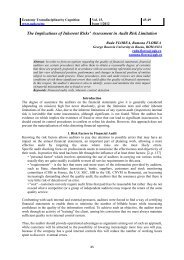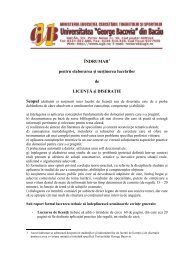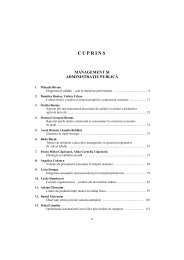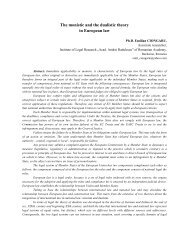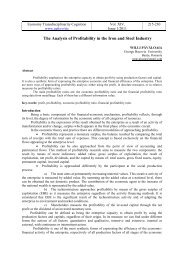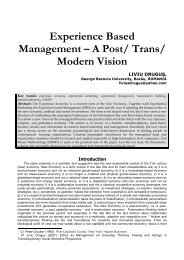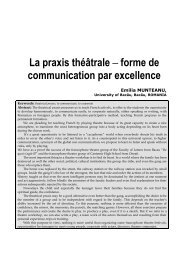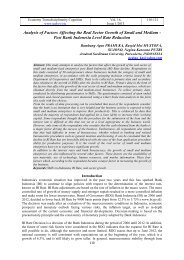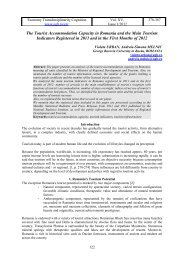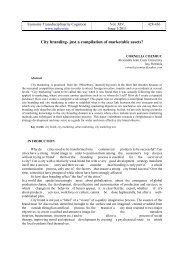BULETIN ÄTIIN IFIC - Universitatea George Bacovia
BULETIN ÄTIIN IFIC - Universitatea George Bacovia
BULETIN ÄTIIN IFIC - Universitatea George Bacovia
You also want an ePaper? Increase the reach of your titles
YUMPU automatically turns print PDFs into web optimized ePapers that Google loves.
64<br />
Mihaela TARULESCU<br />
communication plays in these models is information giving and the enactment of bargaining<br />
strategies and tactics.<br />
As mentioned above, specialists have distinguished two types of negotiation, integrative<br />
and distributive, each of them with the specific tactics.<br />
3.1. As the atmosphere of the integrative negotiation is characterized by openness<br />
and trust, the tactics used are less numerous 4 .<br />
<br />
<br />
<br />
3.1.1. Persuasion tactics<br />
a) The conditioned promise<br />
e.g. “If the goods supplied by you qualitatively comply with our clients’ expectations, we<br />
shall order surplus quantities.”<br />
b) The positive appreciation of the partner<br />
e.g. “We have always appreciated the promptness with which you answered our<br />
requests.”<br />
c) The appeal to norms<br />
e.g. “You know that in such situations the usage indicates a bank guarantee.”<br />
d) The proposal of testing<br />
e.g. “In order to convince you that we agree with you, we shall organize a testing session<br />
of the equipment.”<br />
e) The offer of guarantees<br />
e.g. “The guarantee period we offer is much longer than that of our competitors.”<br />
f) The proposal of mediators<br />
e.g. “In case of dispute, we hope to settle the issue with the assistance of a mutually<br />
accepted mediator.”<br />
g) The search for alliances<br />
e.g. “The Romanian Bank shall guarantee the payment of the credit.”<br />
3.1.2. Tactics that don’t aim at manipulating the partner<br />
a) The firm, credible promise<br />
e.g. “You will get our answer as soon as we read the papers from the bank.”<br />
b) The “cards laid on the table” game<br />
e.g. “Your trade-mark is a guarantee for us.”<br />
c) Reciprocity in granting the advantages<br />
e.g. “We agree to price reduction of 10% if you take care of transport documents.”<br />
d) Reformulation<br />
e.g. “Therefore, you consider that it is our obligation to speak to the Bank.”<br />
e) Constructive proposals<br />
e.g. ”Let us find together some new sources for financing the project.”<br />
4 Chiriacescu, Adriana (2003): Comunicare Interuman. Comunicare în afaceri. Negociere, Bucureti,Editura<br />
ASE, p. 200.



